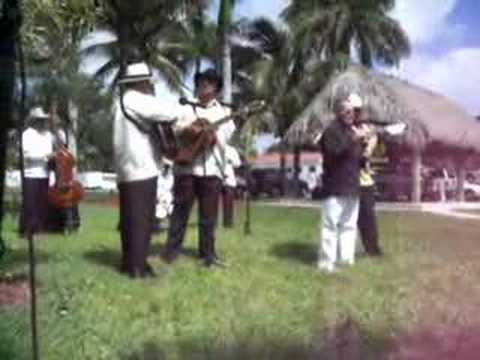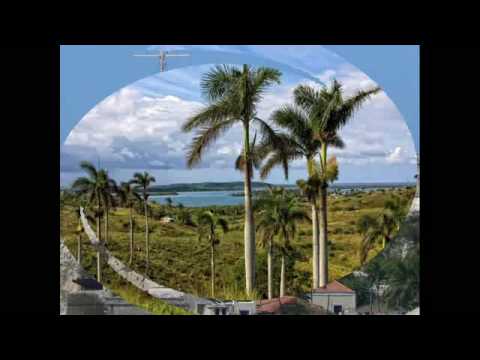Musical Stories: La Criolla, La Guajira and the Punto Cubano.
Some genres of Cuban music “La Criolla” is a singable genus whose origin is located in the Dominican Republic sister. In Cuba was the camagüeyano Luis Casas Romero who popularized it and many are their famous Creole: El Mambí, Carmela, Alma Criolla, in el Palmar, Mi Bohio, Patria Querida, Quisqueyana, I am Cuban, Habanera, among other titles.
Some musicologists placed the origin of Creole in the key and others in the Colombian bambuco. Among the composers and performers who cultivated the Creole in addition to Luis Casas Romero encountered Sindo Garay with the immortal Mujer Bayamesa, Gonzalo Roig with the eternal love me a lot, thus other artists discovered in Creole a beautiful musical genre, in which express their loving and patriotic feelings.
“Guajira” is the cousin of the Creole, as in their lyrics is recreated the peasant issue, using versified stanzas, in the style of the tenth. Figures as Ramon Veloz y Guillermo Portabales, who is considered the creator of la guajira de salon, incorporated it into their repertoire by far I exist, thus the voice of Celina González e inmortalizó its subjects to Santa Barbara, I’m Cuban point, the Queen of the sea and others. There is a musical form of the guajira, than to the mix with the ‘Son’, called the guajira Son.
Key Ridge we offer a few details. This genre was created in the 19TH century by groups of singers roamed neighborhoods and port areas of Havana. Subsequently, they spread to other Cuban towns. The Spanish was intrinsic in the melody, as well as drafts of country music, but as it emerged in poor neighbourhoods of black populations, African seal was always present.
We must remember the famous key Marti whose original lyrics was romantic and went on to become a subject of complaint, can be considered as the first song to protest Cuban, given the anti-imperialist contents.
Another very liked genre is the “Cuban”. His presence and origin can find it in the Canaries (Islanders), and Andalusians, who arrived in Cuba at different times, to receive the contributions of Africans present in our land, that country music took a distinctly Cuban character, although without forgetting its beginnings. His music is accompanied by guitars, three, lute, key, guiro and guayo.
In different regions of the country emerged varied tunes, such as the guantanamera, tulibamba, as well as the espirituano point, Matanzas point, cross point etc.
Many figures were highlighted as tenths creators and interpreters of the same. Remember Juan Cristóbal Nápoles Fajardo (El Cucalambé), Jesús Orta Ruiz (El Indio Naborí), Justo Vega, Chanito Isidrón, Adolfo Alfonso, Inocente Iznaga (El Jilguero), Radeunda Lima, Alexis Pimienta, Luis Paz (Papillo), and many more.
Agencies/CMBQ/Juan B. Rodriguez/Internet Photos/YouTube/Arnoldo Varona / TheCubanHistory.com
THE CUBAN HISTORY, HOLLYWOOD.
Historias Musicales: La Criolla, La Guajira y el Punto Cubano.
De algunos géneros musicales cubanos “La Criolla” es un género cantable cuyo origen se sitúa en la hermana República Dominicana. En Cuba fue el camagüeyano Luis Casas Romero el que la popularizó y son muchas sus famosas criollas: El Mambí, Carmela, Alma Criolla, Bajo el Palmar, Mi Bohío, Patria Querida, Quisqueyana, Soy Cubano, Habanera, entre otros títulos.
Algunos musicólogos sitúan el origen de la criolla en la clave y otros en el bambuco colombiano. Entre los compositores e intérpretes que además de Luis Casas Romero cultivaron la criolla encontramos a Sindo Garay con la inmortal Mujer Bayamesa, Gonzalo Roig con la eterna Quiéreme Mucho, así otros artistas descubrieron en la criolla un hermoso género musical, en el cual expresar sus sentimientos amorosos y patrióticos.
“La Guajira” es la prima hermana de la Criolla, pues en sus letras se recrea el tema campesino, utilizando estrofas versificadas, al estilo de la décima. Figuras como Ramón Veloz y Guillermo Portabales, al que se considera el creador de la guajira de salón, la incorporaron a su repertorio con mucho existo, así la voz de Celina González inmortalizo sus temas A Santa Bárbara, Yo soy el punto cubano, A la reina del mar y otras. Existe una modalidad musical de la guajira, que al mezclarse con el son, se le llama la guajira son.
Del Canto de Clave ofrecemos unos detalles. Este género musical fue creado en el siglo XIX por grupos de cantadores que recorrían barrios y zonas portuarias de La Habana. Posteriormente, estos extendieron a otras ciudades cubanas. Lo español estaba intrínseco en la melodía, así como giros de la música campesina, pero como surgió en barrios pobres de poblaciones negras, siempre estuvo presente el sello de lo africano.
Debemos recordar la famosa Clave a Martí cuya letra original era romántica y pasó a convertirse en un tema de denuncia, pudiéndose considerar como la primera canción protesta cubana, dado el contenido antiimperialista de la misma.
https://youtu.be/Po9vNEgWGY8
Otro género muy gustado es el “Punto cubano”. Su presencia y origen lo podemos hallar en los canarios (isleños), y andaluces, que arribaron a Cuba en diferentes épocas, al recibir los aportes de los africanos presentes en nuestra tierra, esa música campesina tomó un carácter netamente cubano, aunque sin olvidar sus inicios. Su música es acompañada de guitarras, tres, laúd, clave, güiro y guayo.
En diferentes regiones del país surgieron variadas tonadas, como la guantanamera, la tulibamba, así como el punto espirituano, el punto matancero, el punto cruzado etc.
Muchas figuras se destacaron como creadores de décimas e intérpretes de las mismas. Recordemos a Juan Cristóbal Nápoles Fajardo (El Cucalambé), Jesús Orta Ruiz (El Indio Naborí), Justo Vega, Chanito Isidrón, Adolfo Alfonso, Inocente Iznaga (El Jilguero), Radeunda Lima, Alexis Pimienta, Luis Paz (Papillo), y muchos más.
Agencies/CMBQ/Juan B. Rodríguez/Internet Photos/YouTube/ Arnoldo Varona/ TheCubanHistory.com
THE CUBAN HISTORY, HOLLYWOOD.








